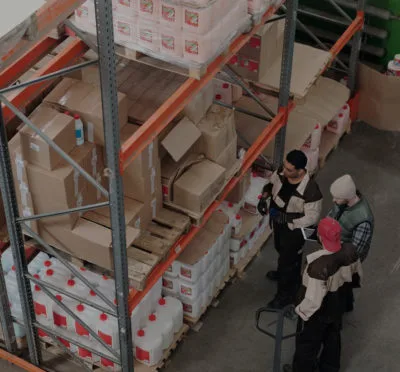Are you missing something in your current management strategy when it comes to manual handling injuries in the workplace?
Manual handling continues to be one of the leading causes of injury in many workplaces where manual tasks make up the predominant job tasks completed by workers. This is consistent across industries and sectors such as production, construction, mining, energy production and refining, shipping, transport and utilities.
Whilst many industries and sectors continue to evolve their risk management strategies in the workplace through higher order control measures such as elimination, engineering and substitution strategies, there are many circumstances where manual handling simply cannot be eliminated, and lower order control measures are employed to assist in reducing risk and exposure to manual task hazards.
We are also seeing across many industries and sectors an ageing workforce where there is an accumulation of physical stresses on workers combined with a natural history of musculosketal complaints and co morbidities that impact on one’s health and wellbeing. For many companies this presents a real challenge as many businesses have set system of work that require certain levels of physical function and output requirements and they must adapt to ensure they continue to look after the health and wellbeing of their workforce, but also be productive and profitable to ensure the business thrives for all to benefit.
As an organisation, Corporate Work Health Australia are often highly sought after to deliver a range of services to assist in the management of eliminating and reduce manual handling hazards and risks and educate workers on how reduce the likelihood of suffering a musculoskeletal disorder from manual tasks.
As a business we look to work with companies to review their entire manual handling risk management process to identify where gaps exist and where there are opportunities to improve their current processes. These include
1.Risk management systems assessment
This process involves consultation with key stakeholders within the organisations, with the key objective to reduce soft tissue injuries within the organisation linked to manual handling activities.
Key elements of a thorough HMT risk management system are consulted over within your organisation to highlight any areas which may need to be improved.
Key areas reviewed are:
- Commitment policy and planning
- Consultation and communication
- Hazard identification and risk assessment
- Training and competency
What’s involved:
- Phone consultation with key stakeholders
- Site visit with key stakeholders to complete the hazardous manual task risk management assessment
- Reporting on key findings of the assessment
The outcome:
The delivery of a report highlighting key findings, strategies to improve any gaps in the organisation’s risk management systems and key expected outcomes from the integration of these strategies.
2. Define workflow and determine manual tasks
- Consult stakeholders to determine workflow for phases of work and determine manual tasks that fall within the workflow
- Ensure all manual tasks are named systematically
3. Site visit & consultation with stakeholders
- Consult key team members on hazardous manual task risk factors
- Observe/photograph/film hazardous manual task risk factors.
4. Report on hazardous manual tasks including high risk tasks, body areas effected and risk factors
- Prepare a report which details name of task, body areas exposed to risk, and any hazardous manual task risk factors present
5. Complete manual task risk assessments
- Complete manual handling risk assessment on up to 10 high risk tasks OR all tasks, using an appropriate risk assessment tool
6. Recommend control measures
- Through consultation and external research, suggest control measures for tasks according to the risk control hierarchy.
7. Control measure review
- Stakeholder meeting (OHS/WHS, team leaders) to determine if control measures are reasonably practicable
8. Safe work procedures development
- Develop a general overarching manual handling safe work procedure OR develop task specific manual handling procedures for tasks defined in item 3.
9. Manual handling training options
Education and training options include:
- Create customised online training program that workers login and complete training as part of their induction and/or every 2 years (refresher).
- Create customised online video (15-30 minutes) of MH in the workplace. Discussing MH hazards/risks and risk management, review of best practice manual handling strategies for job tasks.
- Create customised face to face manual handling training that incorporates best practice manual handling training according NSW guidance materials. Includes theory and face to face onsite technique review.
10. Pre employment / Functional capacity Testing – Injury prevention
- Develop individual job role job task analysis documents which outline inherent physical requirements of the job i.e., such as postural tolerances and how long a person needs to spend and frequency in a posture, weighted tolerance.
If your business is currently in the process of reviewing their manual task risk management system and would like to find out more about how we could work with you, please book an online meeting with one of our directors below.
Book with Wade if you are based in QLD, NSW, ACT or NT by clicking HERE.
Book with Heath if you are based in VIC, SA or WA by clicking HERE.

